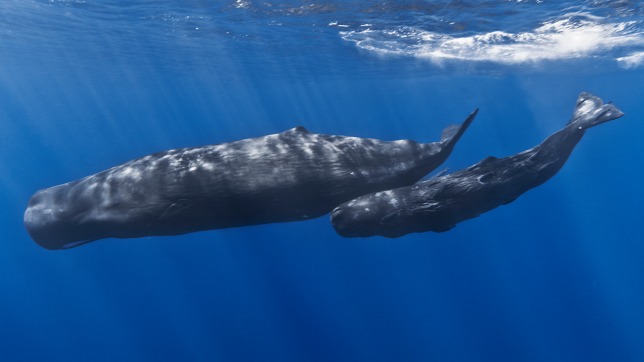The great sperm whale is one of the loudest animals on the planet, producing crackling, knocking, and chattering sounds to communicate with other whales a few hundred miles away. The researchers say the symphony of these oddly patterned sounds may be sophisticated enough to be a full-fledged language. But can we understand what these cetaceans are saying?
They decode animal communications
The answer to this question is yes, but first, researchers will have to collect and analyze an arsenal of unprecedented contacts from large sperm whales.
Large sperm whales (Physeter macrocephalus) with a brain size of six times ours lead a complex social life,
Who spend most of their time socializing and exchanging different sounds. These messages can be short, for example 10 seconds, but can last up to half an hour.
The complexity and duration of whales’ sounds indicate that they are in principle capable of presenting more complex grammar than other non-human animals. The researchers noted arXiv.org In a study published on the server.
The publication is called CETI (cetacean translation initiative Outlines a plan for how to decode animal communication as part of an interdisciplinary project known as . The strange “click sequences” are attempted first by decoding animal audio recordings and then using machine learning. CETI scientists decided to study large amber whales because their flicks contain an almost Morse code structure that can be easily analyzed by artificial intelligence (AI).
It is very difficult to study
What little science knows about the great sperm whales today was all learned recently. According to new research published by CETI, it wasn’t until the 1950s that a research scientist noticed animals making sounds.

Now, however, this click seems to serve a dual purpose Woods Holls Institution of Oceanography writes. – large amber whales can be submerged to a depth of up to 1200 meters, which is three times deeper than research submarines; Since there is absolute darkness at this depth, these sounds are designed so that clicks can be used for echolocation.
The same clicking mechanism is used in social communication, although these sounds slightly different.

All this is very challenging as large sperm whales are very difficult to study دراسة said David Gruber, marine biologist, CETI project manager at Live Science Online science portal. “But now we really have the tools to look at all of that in a way that we haven’t been able to do until now.
He added that these devices include artificial intelligence, robots and drones.
They can follow whales without being noticed
The CETI project has currently compiled a database of about 100,000 sperm whale clicks, which marine biologists have diligently collected over many years, but machine learning algorithms could require nearly $4 billion.
To address this shortcoming, CETI has established a number of automated channels for collecting whale recordings.

These include underwater microphones placed in waters visited by large amber whales, microphones used by drones once they notice a group of animals congregating on the surface, and there are also robotic fish They can track and listen to whales unnoticed.
However, experts say that parsing audio is more difficult than parsing text. For example, it may be difficult to start and end a word.
The boundaries between the spoken words are clearer and less regular, so more data may be needed for patterns Sharma noted. Another difficulty is that the worlds in which these whales live are very different, so their behavior can be completely different.












































